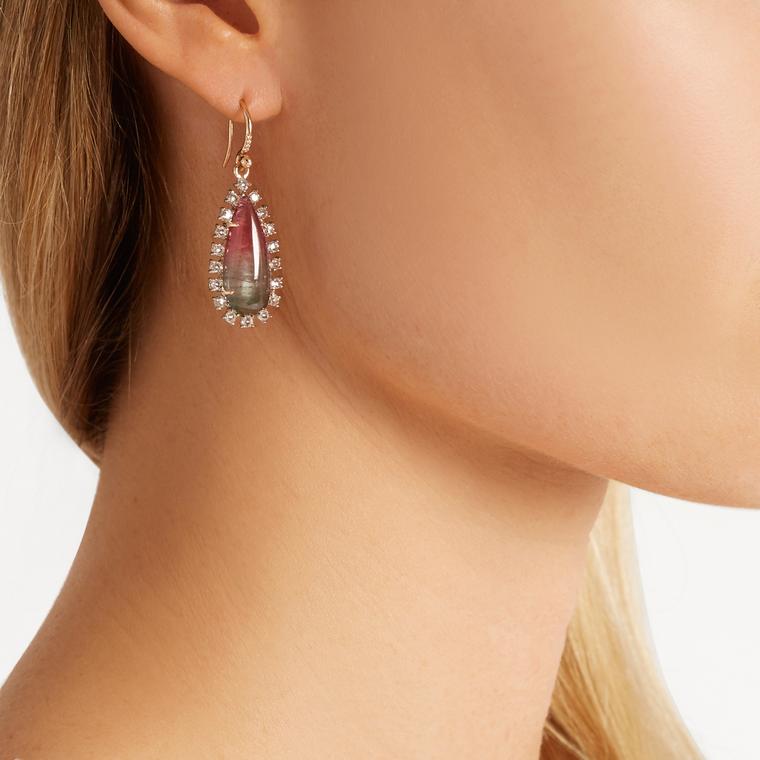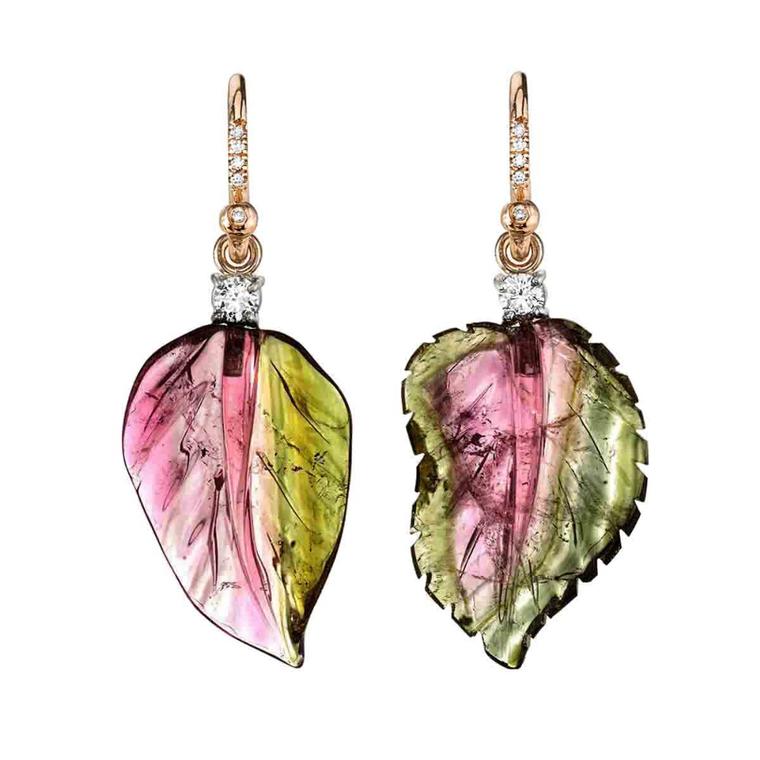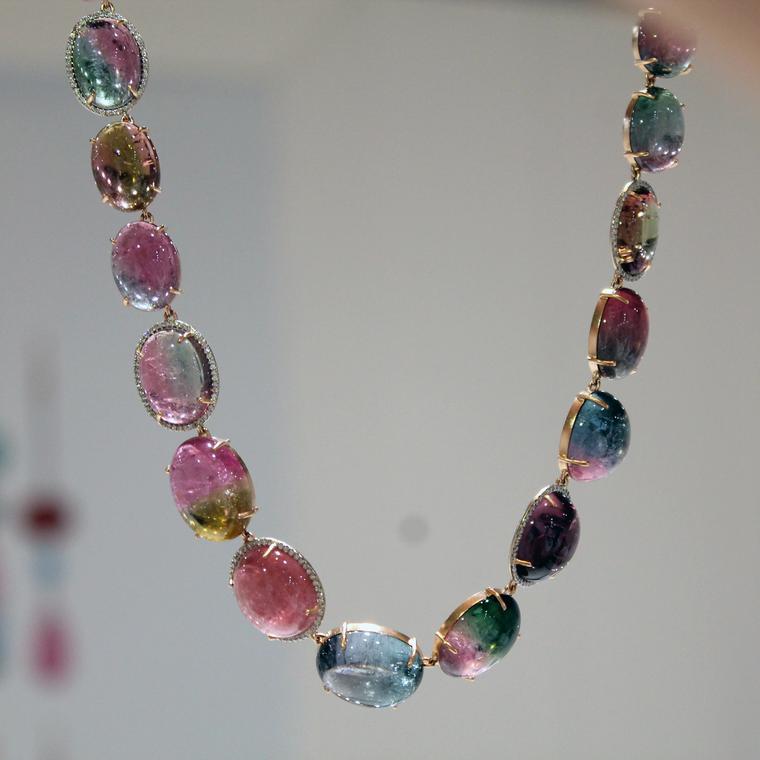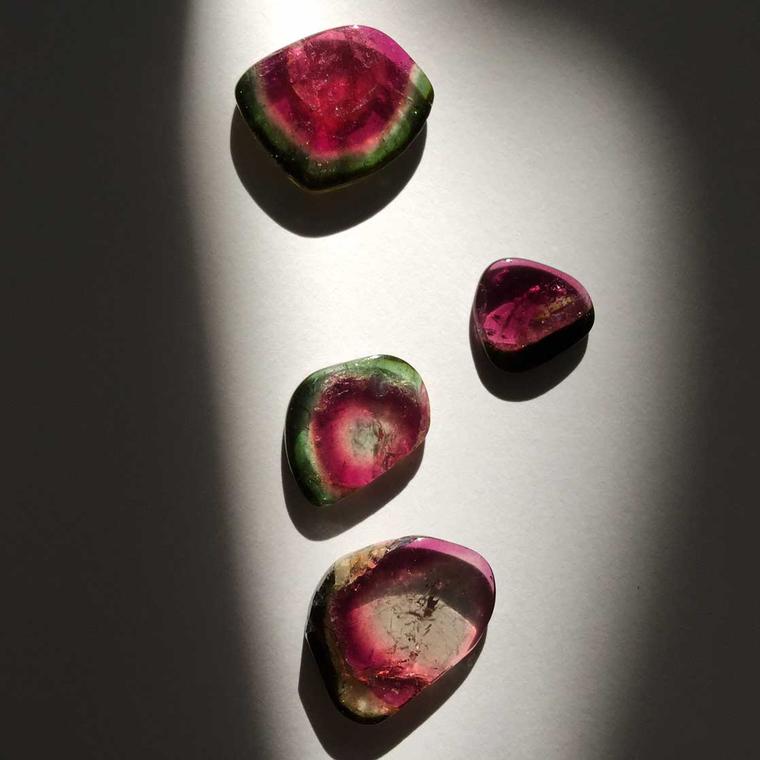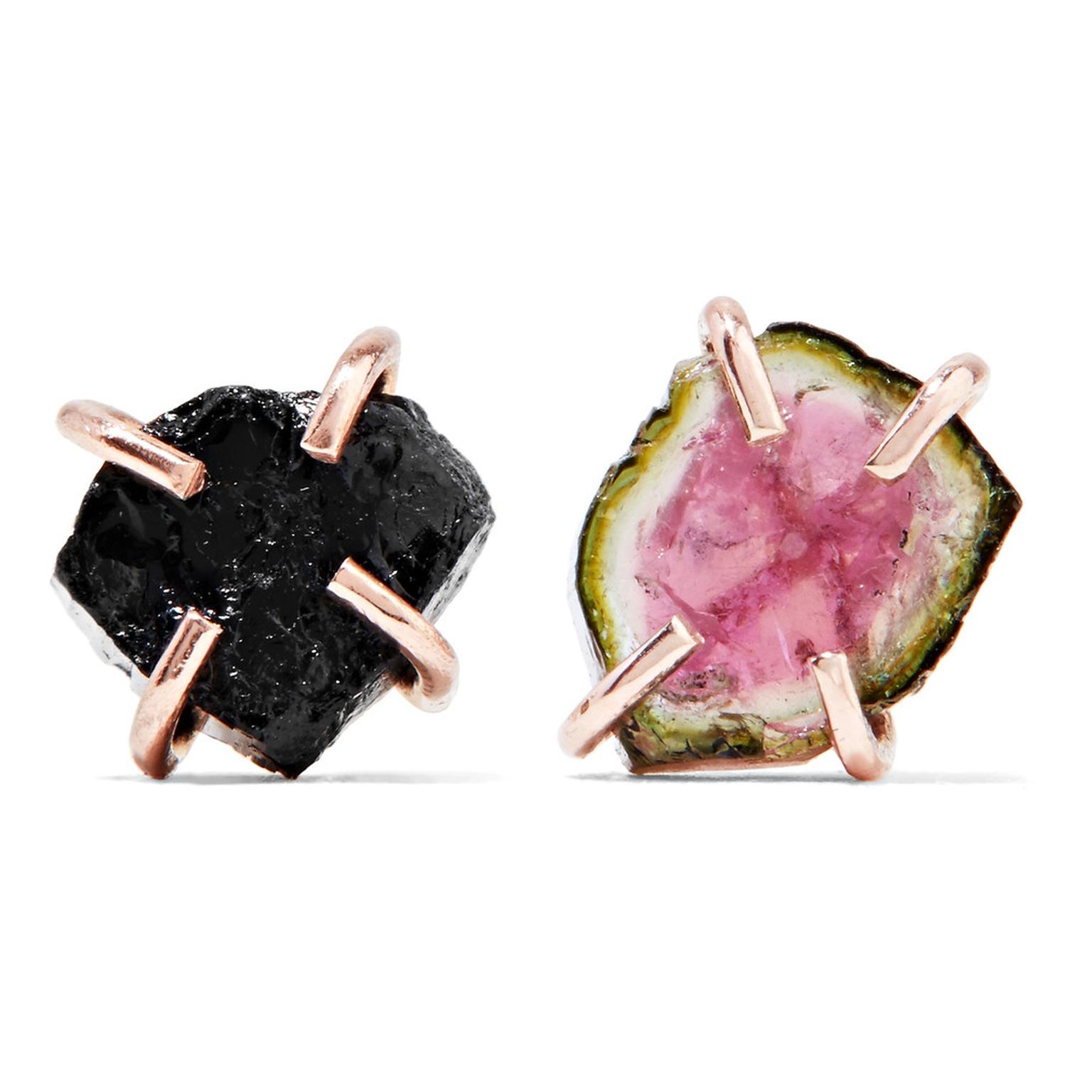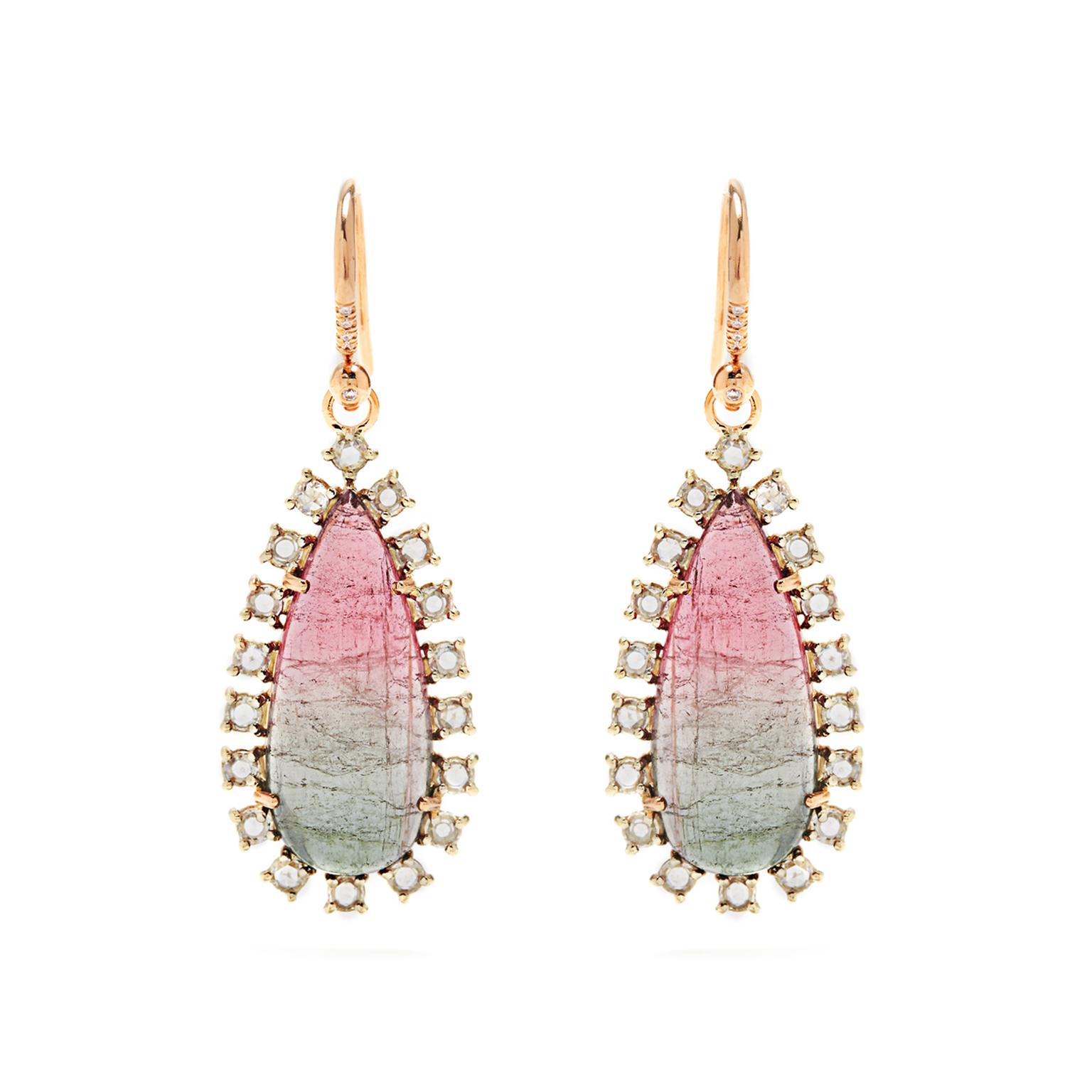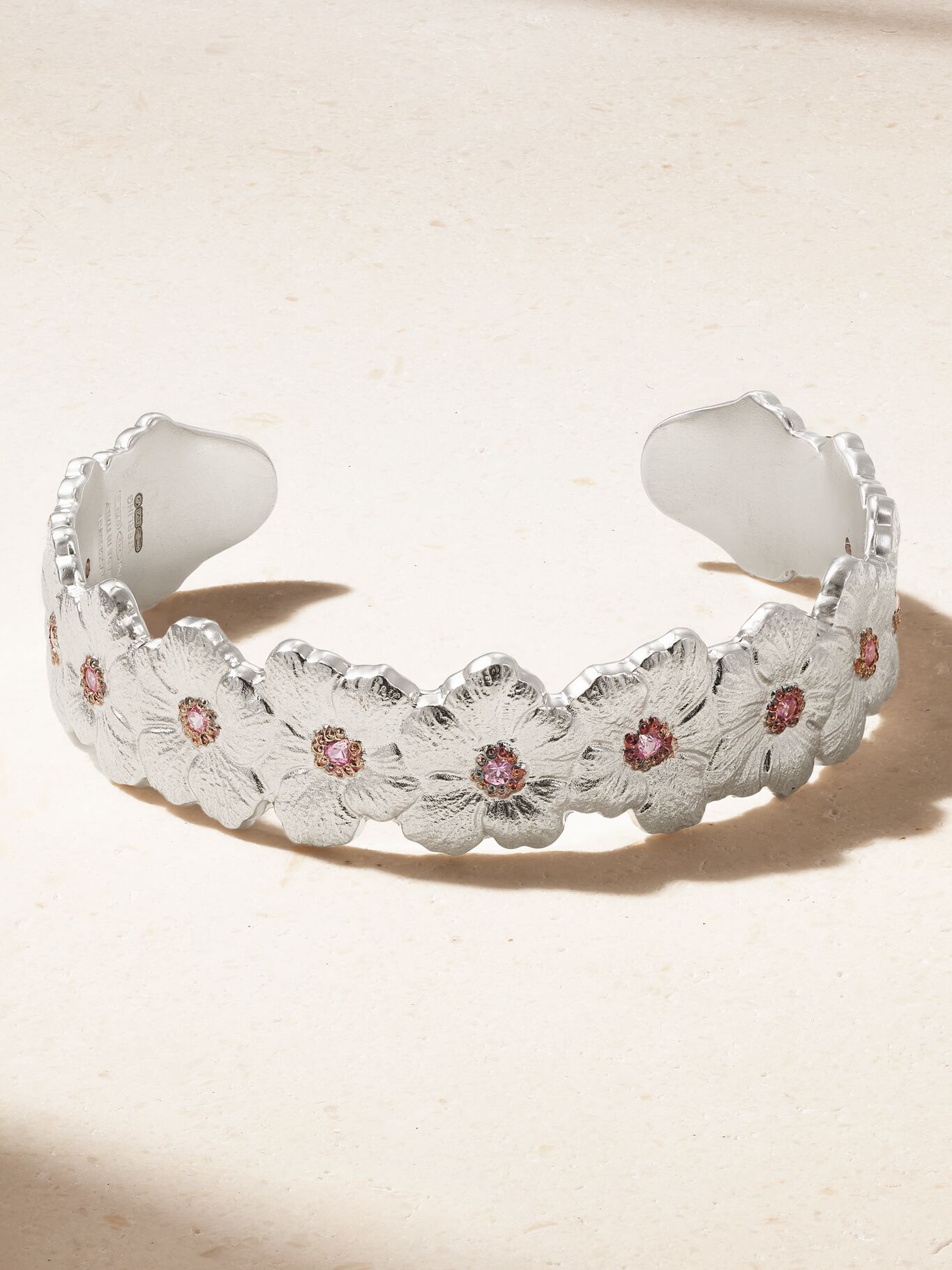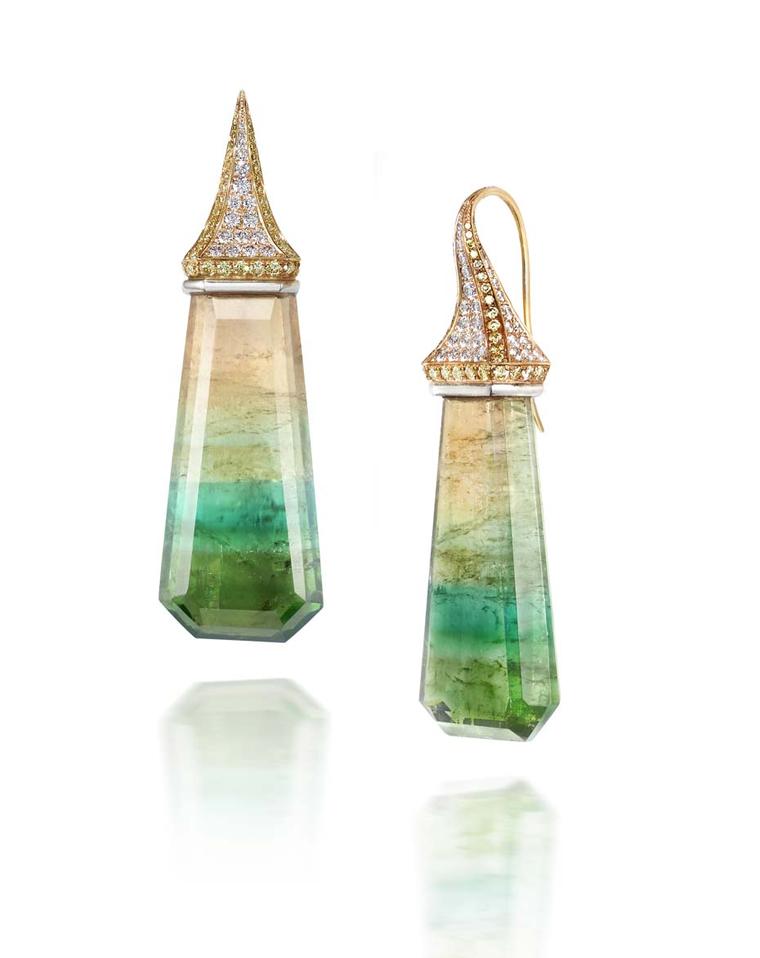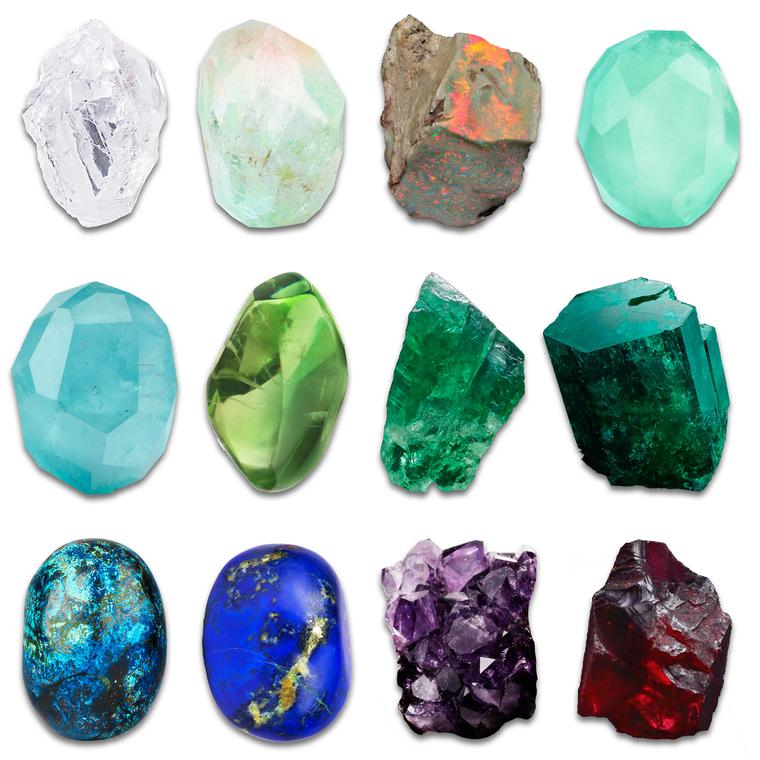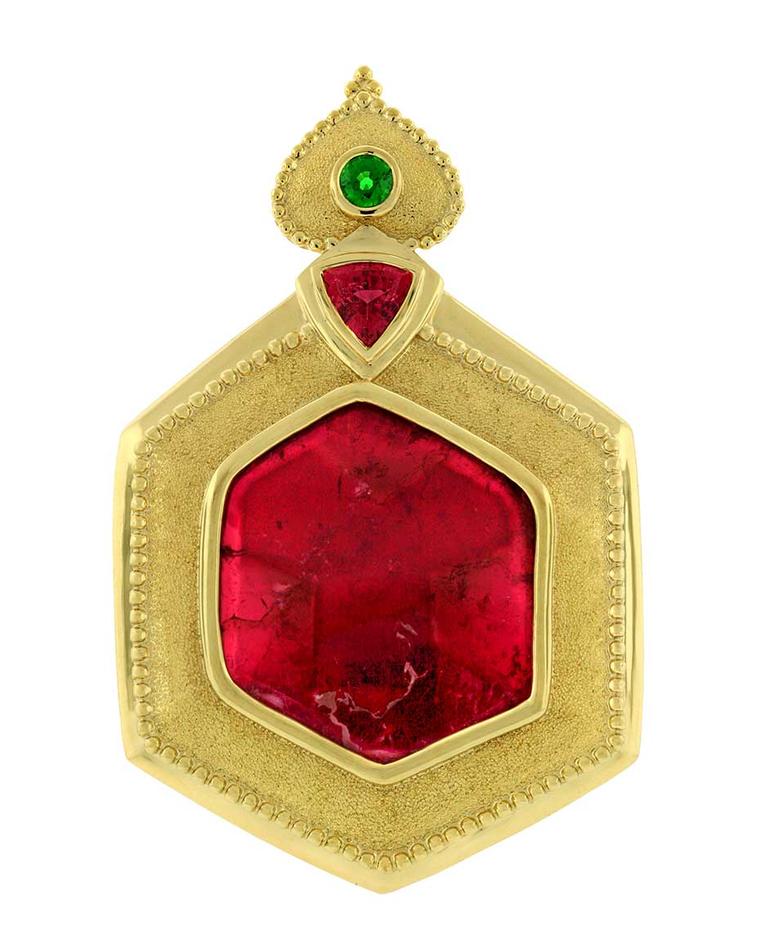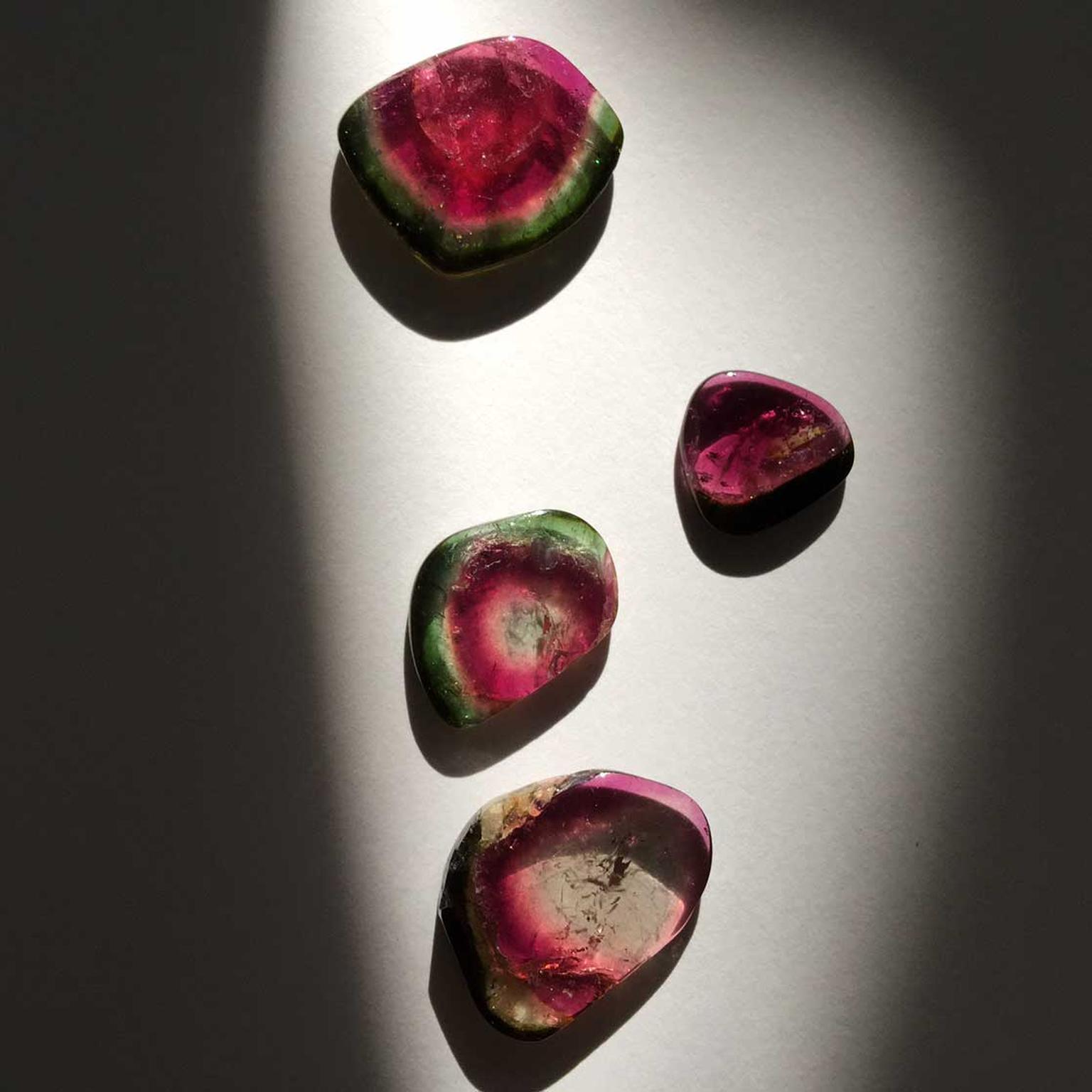
With its juicy burst of colour, the aptly named watermelon tourmaline perfectly mimics the rind and flesh of our favourite summer fruit. Here we take a closer look at the origins of the watermelon tourmaline and talk to the designers who have a particular preference for working with this one-of-a-kind gem.
What are watermelon tourmalines?
All gems in the tourmaline family are mixed crystals of aluminium boron silicate that also contain elements such as iron, manganese, sodium, lithium, or potassium. While tourmaline was first discovered in Brazil in the 16th century, the green crystals were initially confused with emerald. It was not until the 19th century that the gem was classified as tourmaline.
Gemmologists now divide tourmalines into 11 different species depending on their properties and chemical composition. Elbaite is the name given to the most colourful members of the tourmaline mineral family. The red or pink tourmalines known as rubellites, the blue variety called indicolite and the coveted Paraiba tourmaline are all Elbaites, as is the multi-coloured watermelon tourmaline.
The term tourmaline was derived from the Singhalese phrase tura mali, meaning “stone mixed with vibrant colours”, and the watermelon prefix refers to the unique colour combination that resembles the fruit of the same name. With a Moh’s scale hardness of 7-7.5, the watermelon tourmaline is a relatively durable stone for jewellery while its distinctive and eye-catching colours mark it out as a favourite with designers.
How is watermelon tourmaline formed?
Most tourmaline deposits are found in veins that run through rocks, which were created by molten magma from volcanoes. As the magma cooled, large cracks formed, which were filled with a solution of water and minerals such as iron, lithium or manganese that, over time, turned into crystals of tourmaline and other stones. It is these trace elements that give tourmalines their vivid colours, ranging from red, green and blue to yellow and orange.
Gem expert Martin Bell, partner of renowned jeweller Paula Crevoshay, explains: “As the crystal grows, it uses the elements that fit most easily within the lattice. As these elements in the solution are depleted, other elements are substituted and the colour of the crystal changes.”
Several different types of crystal can form in the same rock pocket and the chemistry of the solution can also change over time, either through depletion caused by crystal growth or as new minerals are introduced via rain or other water sources. As a result, many tourmaline mines produce a variety of gem colours, depending on which trace elements the stone has absorbed. For example, iron-rich tourmalines are dark blue or black while a high concentration of manganese results in a red, pink, brown or yellow crystal. Bright, emerald-like green is caused by chromium, and lithium can produce a rainbow of hues from blue or green to red, yellow or pink. Tourmaline crystals of just one single colour are rare as even slight variations in the gemstone’s composition cause completely different colours to appear.
What causes watermelon tourmaline’s colours?
The bi-coloured and multi-coloured zoning that we so often see in tourmaline gems happens when the trace elements change in concentration or composition during a crystal’s growth. These unique gems can have coloured zones across the length of the crystal, or they can have a core of one colour and an outer edge of another colour. A single tourmaline crystal can contain up to 15 different colours or shades – no wonder it has been nicknamed the “Rainbow Gem”.
In watermelon tourmaline, pink and green Elbaite crystals are found in the same stone, and these colour zones provide a visual record of its formation process.
As the watermelon tourmaline crystal grows and thickens, it is exposed to different minerals such as manganese and lithium, which cause the gem to change colour from a pink centre through a pale zone to the green rind.
Where is watermelon tourmaline found?
Brazil, Nigeria, Madagascar, Afghanistan and the United States all produce watermelon tourmalines. The North American state of Maine, where the gem was first discovered at a mine in Newry in 1902, is renowned for its stunning watermelon tourmaline. In the early 1970s, a large pocket of some of the finest watermelon tourmalines ever seen was unearthed at the nearby Plumbago Gem Pit.
Brazil is also famous for its gem-quality watermelon tourmalines, with amazingly clear and vibrant colours. Gem dealer Matthew Morrell of Direct Source Gems says the most abundant sources of classic red/green watermelon tourmalines are the Araçuaí and São José da Safira regions of Minas Gerais in Brazil.
What does watermelon tourmaline look like?
As the name suggests, watermelon tourmaline displays banded colours that resemble a ripe slice of watermelon. The red or pink centre is surrounded by a rim of green, often separated by a sliver of pale pink or white. The brightly coloured zones can also occur at either end of the gem although there is some debate as to whether these stones should be classified as watermelon or simply bi-colour tourmalines.
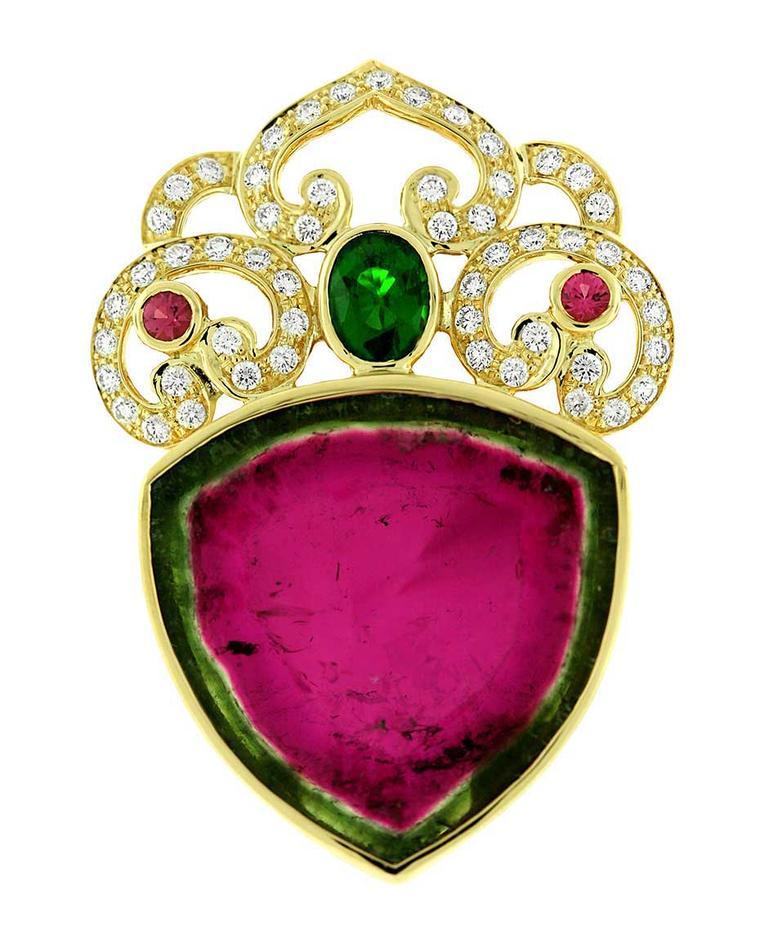
Watermelon tourmaline crystals tend to form with a distinctive rounded triangular shape, as demonstrated beautifully in this stunning pendant by Paula Crevoshay. Watermelon tourmalines with vivid, clearly separated colours are very rare and command high prices. Matthew Morrell says: “Clean stones with good crystal in the 4-7 carats range, with an even distribution of each colour, change hands in Europe at between $500-$600 per carat.”
Cutting the stone into slices like a loaf of bread rather than faceting the rough often enhances the resemblance to a real watermelon. Their complex structure makes tourmalines very difficult to cut. A great deal of expertise is required to identify areas of tension within the stone, which can cause it to crack during the cutting process.
Which jewellers are working with watermelon tourmalines?
Whether it is sliced or faceted, the watermelon tourmaline adds both colour and a sense of drama to fine jewellery. One of the finest pieces that we have come across is the aforementioned pendant by American jewellery designer Paula Crevoshay. The intensely coloured centre stone weighs in at over 50 carats and is surrounded by tsavorites, pink tourmalines and diamonds.
Paula says: “I fell in love with tourmalines when I first started making jewellery as they were very affordable, colourful and durable. I have never fallen out of love, only deeper!”
California-based designer Irene Neuwirth is another fan of the watermelon tourmaline, frequently incorporating them into her unique jewels, while Retrouvaí’s Kirsty Stone, has made them a defining feature of her intentionally mismatched Gypsie earrings, which stack different colours and cuts of tourmaline on top of one another, including the watermelon variety.





